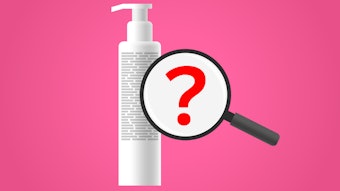
The manufacturing facility for each of your products must be registered with the FDA, so check with your contract manufacturers to make sure they are fully compliant. A contract manufacturer that makes products for more than one brand owner only needs one registration with the FDA. That registration must include the details of all the products made for the U.S. market in that facility.
littlewolf1989 at Adobe Stock
Log in to view the full article
Need more resources to address MoCRA? The Independent Beauty Association (IBA) offers a range of resources to its members and the industry at large.
In 2022, Congress passed the Modernization of Cosmetics Regulation Act (MoCRA) with the intention of ensuring the safety and efficacy of the many cosmetic products consumers use daily. Effective Dec. 29, 2023, MoCRA gives the U.S. Food and Drug Administration (FDA) increased authority to regulate cosmetics, ensuring the safety and health of consumers and cosmetics industry workers.
MoCRA applies to every company in the world that is responsible for a cosmetic product sold in the United States, including brand owners and manufacturers of personal care and salon and intimate products. All cosmetic manufacturing facilities that sell products in the United States—including those outside the country—must register with the FDA. All owners of cosmetic brands must:
- Establish a system for consumers who have adverse events (e.g., skin reaction, hair loss, nausea, eye issues).
- Include adverse event contact details on all product labels.
- Maintain up-to-date and complete safety substantiation records of all products on sale in the United States.
- Register product details with the FDA, including the FDA registration number for each manufacturing facility.
- List fragrance allergens on labels when the FDA has designated them.
As a cosmetics brand owner or manufacturer, compliance with MoCRA will be a legal requirement at the end of this year. Failure to comply with the legislation will increase your risk of regulatory penalties, recalls and reputational harm. Complying with the law will support your competitive edge, helping you attract discerning and loyal consumers who trust that your products are safe and effective.
Below is a MoCRA compliance checklist for cosmetics brand owners and manufacturers:
1. Create a system for adverse events.
Cosmetics brand owners must develop a system for reviewing, reporting, investigating, and retaining records of adverse events. Organizations must include on each cosmetic label the U.S. address, phone number or electronic contact information, including website, for reporting adverse events.
Start by identifying who will be contacted in the case of adverse events. Then, identify who will evaluate the adverse event for:
- Level or frequency of reaction consistent with exposure levels in the population of target users.
- Out-of-trend results that require investigation.
- Level of reaction that raises the adverse event to serious. Identify the communication flow between the brand owner, the responsible formulator, the manufacturer, your representative and the FDA.
- Records of your adverse reaction response system must be available to the FDA for inspection.
Consider working with an expert to manage adverse events, as it could save money and resources compared with creating the capability in-house.
2. Maintain records of safety substantiation.
Under MoCRA, the FDA is directed to adopt international safety standards, such as the European Cosmetic Product Safety Report (CPSR), which is widely accepted as the global gold standard of safety substantiation. The following two steps are key:
- If you have a CPSR supporting a European version of the product you are placing on the U.S. market, review the CPSR to ensure that it is current, accurate, complete and applies to the U.S. version.
- If you do not have a CPSR for any of your products, then immediately begin the process of creating a file using the CPSR as a model, which is recognized in multiple countries and will support both your U.S. business and other major markets. Determine who will collect the data for products on sale in the United States. Products can be organized by families that contain the same ingredients but vary by color, flavor or fragrance.
Review the existing safety substantiation file (e.g., European CPSR) to determine whether it is fully up to date with the current formula. If the U.S. version of the product is not covered by the file, then identify who will lead additional work on safety substantiation. Track progress and identify where the records will be held in case of a request for review by the FDA.
3. Prepare your product listing.
The FDA plans to open its registration portal in October 2023 at fda.gov. Initial traffic likely will be very high, possibly overwhelming available bandwidth. Collect your data now in a machine-readable format so you can be first in line. You will need to gather the following for each product:
- Product name
- Manufacturing facility registration number (provided by FDA during registration)
- Name and phone number of the responsible person at the brand-owning organization
- Product category
- List of ingredients by name in label order (largest to smallest)
- Product listing number, if relevant
- Number of product variants if the product is a family
The FDA has issued a draft “Registration and Listing of Cosmetic Product Facilities and Products: Guidance for Industry.” The administration has said it will use the Structured Product Labeling format in the listing/registration portal. This is a format already used by the FDA for drug product listings and establishment registration.
4. Make sure your manufacturing facilities are registered with the FDA.
The manufacturing facility for each of your products must be registered with the FDA, so check with your contract manufacturers to make sure they are fully compliant. A contract manufacturer that makes products for more than one brand owner only needs one registration with the FDA. That registration must include the details of all the products made for the U.S. market in that facility. Manufacturing facilities outside the country must appoint a U.S. agent before December 29, 2023, and include U.S. agent contact details when registering with the FDA.
Your manufacturing facilities will need to collect the following information for each product they make:
- Brand name
- Manufacturing facility name
- Manufacturing facility address
- Manufacturing facility email address
- Manufacturing facility phone number
- Product category
- Responsible person
- U.S. agent name, address, phone number and email (if the facility is not in the United States)
Under MoCRA, the FDA is authorized to require a mandatory recall if it reasonably believes that a product is adulterated or misbranded and is the cause of a public health risk. The FDA also can withdraw the manufacturing facility registration, preventing further supply of product from the manufacturer to the U.S. market.
5. Develop a process for label compliance.
Identify who will be responsible for including adverse event contact information on labels. This will include contact name, address, phone, email or URL for receiving adverse event notifications. You’ll need to modify the label artwork and/or develop a sticker to include on products that have old label information.
Be ready to replicate the above steps so you can keep registration, adverse event reporting, safety substantiation and labeling current with new product launches, range extensions and sourcing location changes. Consider making these standard operating procedures for your organization moving forward. Doing so will ensure MoCRA compliance is seamless in the future.
MoCRA marks significant progress in ensuring cosmetic product safety and quality. While compliance is mandatory, it also shows a commitment to consumer safety. Your proactive work to ensure compliance will help the industry move forward, increase consumer trust and loyalty and strengthen your own business.
Geoff Waby has more than 30 years of experience in quality assurance with companies such as P&G and Estée Lauder. He has also led regulatory affairs for a third-party testing facility doing both microbiological and analytical tests. He is also the co-lead of a PCPC task force, which has established a hygienic manufacturing graduate certificate course with the James L Winkle College of Pharmacy at the University of Cincinnati. He is currently an independent consultant and is board director of Obelis USA.










